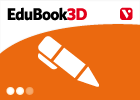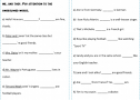Cargando...
Recursos educativos
-
Nivel educativo
-
Competencias
-
Tipología
-
Idioma
-
Tipo de medio
-
Tipo de actividad
-
Destinatarios
-
Tipo de audiencia
-
Creador
Lo más buscado
- literatura infantil
- Experimentos de matemáticas
- Capitales del Mundo
- juegos inglés
- Lagos de África
- Animales dibujados
- Actividades poesía
- Accidentes de tráfico
- Estadística descriptiva
- Experimentos físicos caseros
- Manualidades primaria
- Experimentos sociales
- Ejercicios griego
- Songs for kids
- Competencias básicas
-

Final self-evaluation 07 - Energy
EduBook Organización
- 2051 visitas
Decide if the following statements are true or false: When an object dilates, its volume is reduced. ➝ The electric current in a light bulb produces light and heat. ➝ Geysers and hot springs are…
-
![These pictures show a type of pulley. [...] | Recurso educativo 525884](//pa.tiching.com/uploads/contents/2014/05/19/525884_1400529377_s.png)
These pictures show a type of pulley. [...]
EduBook Organización
- 1701 visitas
These pictures show a type of pulley. How does this simple machine work? Complete the sentences below to describe its function: A pulley has a that passes over a . It makes it easier to heavy objects.…
-

Properties of matter: mass, volume and density
EduBook Organización
- 1528 visitas
Matter Matter is the substance that an object is made of. Our body, this book, a blackboard, a pencil, bread and an apple are all made up of matter. All matter has two physical properties: mass and…
-

True / False. What is sound?
EduBook Organización
- 1509 visitas
Are these sentences true or false? Sound is produced by vibrating objects. We perceive sound because we use our sense of hearing. Sound cannot travel through water or solids. If there is no material…
-

Work and energy. Machines
EduBook Organización
- 3915 visitas
2.1. Forces do work A force does work on a body when it displaces it (figure 1). This is because it changes its energy. For example, if we apply a force to a moving object, the velocity of this object…
-

Calculate. Upthrust and buoyancy in liquids
EduBook Organización
- 4230 visitas
Calculate, in kilograms per cubic meter and in grams per cubic centimeter, the density of an object of 20 kg and 10 dm3 volume. d = kg/m3 d = g/cm3
-

Check. Upthrust and buoyancy in liquids
EduBook Organización
- 3983 visitas
Remember what you have studied in this section and answer the questions: Why do objects float or sink? Discuss. Calculate the density of an object with mass 20 g and a volume of 10 cm3.
-

Check what I know
EduBook Organización
- 3582 visitas
Complete the sentences: is the space an object occupies. We measure weight in and . We can find materials, like wood, in nature. materials, like plastic, are made by humans. We use a ruler to measure .
-

Personal pronouns
Tiching explorer Organización
- 3 lo usan
- 5555 visitas
Printable worksheet (PDF file) designed to help us practice using personal pronouns in sentences (subject and object). We need to sign in to the Vanda51pro website to download this resource.
-

Investigate - Using and recycling materials
EduBook Organización
- 3326 visitas
This symbol indicates that an object is made of a material which we can recycle. Look for objects at home which have this symbol. Make a list of the objects. Write the names of the materials they are made of.
Te estamos redirigiendo a la ficha del libro...



![These pictures show a type of pulley. [...] | Recurso educativo 525884](http://pa.tiching.com/uploads/contents/2014/05/19/525884_1400529377_s.png)









